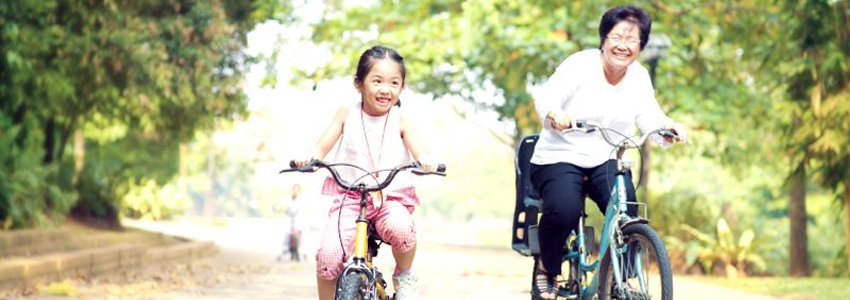I have twin daughters who are fourteen and like most teens, when they return home through summer they reach out for a chilled can of soda, Coke to be precise. They will have other options to choose from like chilled milk, orange juice, mango juice, lemonade but they will head for the one that does them least good. The only way I can get them to not have it at home is to not stock it, which is what I have done this summer. So they crib and complain but they are left with no choice but to go for that milk or juice. Talking to them about bone health this spring has also helped them understand the importance of long-term issues at hand at some level and this made them less resistant to the idea of not having any soda in the fridge.
Start Young with Bone Health
Not just young and older women but teenage girls also need to be educated to building healthier bones. Why should we focus on women and girls? Statistics has it that women are five times more likely to develop osteoporosis in their lives than men.
Parents with teenage daughters should make medical advice available to them on the matter and this means not just telling them what is good for them but also increasing their awareness of habits that will lead to poor bone health and compromised living such as smoking, consumption of junk foods, staying indoors and inactive, trying to lose too much weight too soon etc. Mothers can tie up with obstetricians, orthopaedists and gynaecologists to help the younger populace develop a risk for osteoporosis later in life. As we already know, good habits start young.
Should Teenagers be Scanned For Osteopenia or Osteoporosis?
Dual-energy X-ray Absorptiometry scans (or DEXA) are generally not advised for the younger age bracket as a part of routine test unless there is good reason to like having some risk factor for the condition or having frequent fractures etc. This test which is used to diagnose osteoporosis of the lumbar spine and hips, is recommended for the senior age group.
However, test tools like FRAX can be used once every year for the teenage population. This test is available free of cost and can be done online. It is also available via iPhone, as a hand held calculator, and is integrated in densitometry technology. The test helps detect the level of risk of osteoporosis in both men and women in the next 10-year period. It takes into account various factors for making a risk assessment such as the person’s age, body-mass index (BMI), family history of osteoporosis, smoking and alcohol consumption habits etc. (1)
What Recommendations Are Currently Valid?
Here’s a look at what the Institute of Medicine recommends as per their new release:
CALCIUM INTAKE:
| Age Group | Units |
| 9 to 18 years old | 1300 IU |
| 19 to 50 years old | 1000 IU |
| Women over 50 | 1200 IU |
VITAMIN D INTAKE:
| Age Group | Units |
| Up to 70 years of age | 600 IU |
| Women Over 70 | 600 – 800 IU + routine screening |
The revised guidelines also provide an updated list of drugs approved by the U.S. Food and Drug Administration to treat osteoporosis. The updated guidelines appear in the September issue of the journal Obstetrics & Gynecology.
What You Can Include In Their Diet
Here’s a list of foods that are particularly rich in both Calcium and Vitamin D and you can include them in your teen daughter’s diet to make sure she is keeping her bones healthy and strong: (2)
- Cow Milk, Soy Milk
- Fat-free Cheese
- Skimmed Yoghurt
- Low fat Pudding
- Fortified Orange Juice
- Spinach, Broccoli, Okra, Collards, Kale
- Salmon, Shrimp, Oysters
- Fortified Cereals
- Most Nuts
- All legumes
- All types of Beans (Fava, Kidney, Pinto, Lima)
References:
- Teen Girls Need Bone Health Advice to Stave Off Osteoporosis; MedicineNet.com; Web September 2012; http://www.medicinenet.com/script/main/art.asp?articlekey=161796
- Strength Begins Within – Building Better Bone Health; Bell Institute of Health and Nutrition; Web September 2012; http://www.bellinstitute.com/DisplayResource.aspx?ID=695
Need to know more
Some sites you would like to go through to get more idea on the foods that contain calcium and Vitamin D:
- University of Michigan – Health System; Patient Education Handout associated with UMHS Clinical Care Guideline: http://www.med.umich.edu/1libr/guides/calcium.htm
- HelpGuide.org: http://www.helpguide.org/life/healthy_diet_osteoporosis.htm
- Vrg.org – Calcium In Vegan Diet: http://www.vrg.org/nutrition/calcium.htm





Article Comments